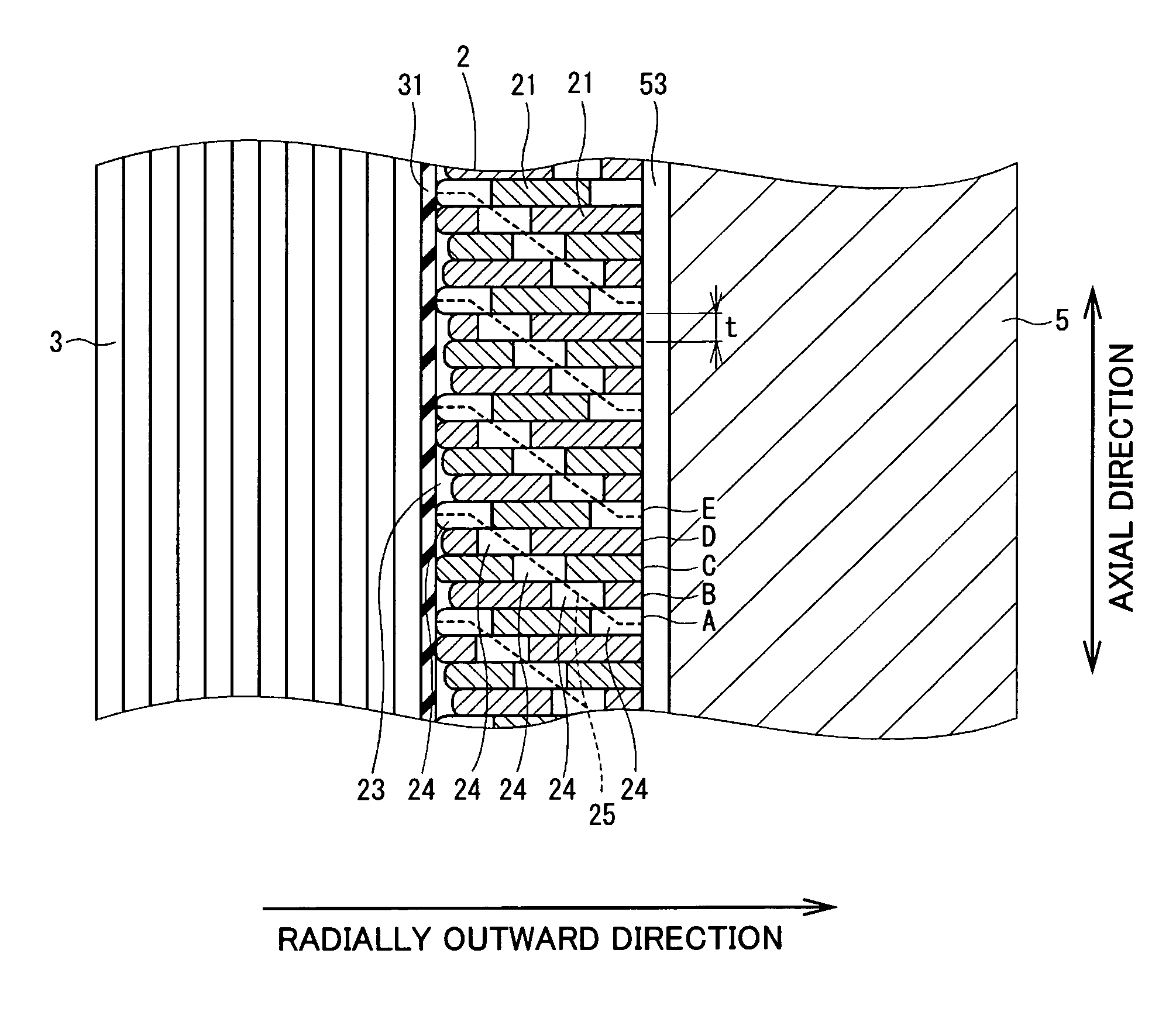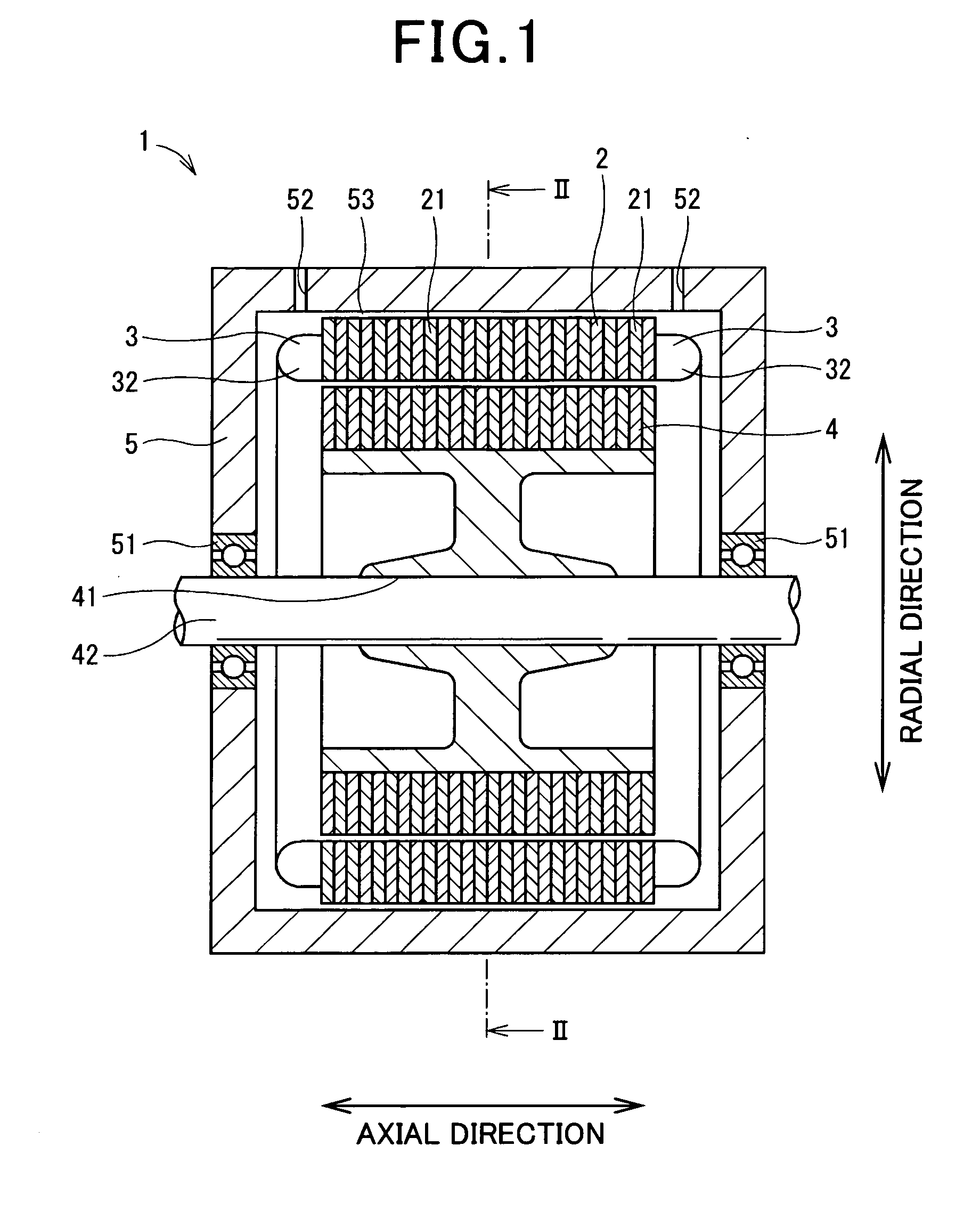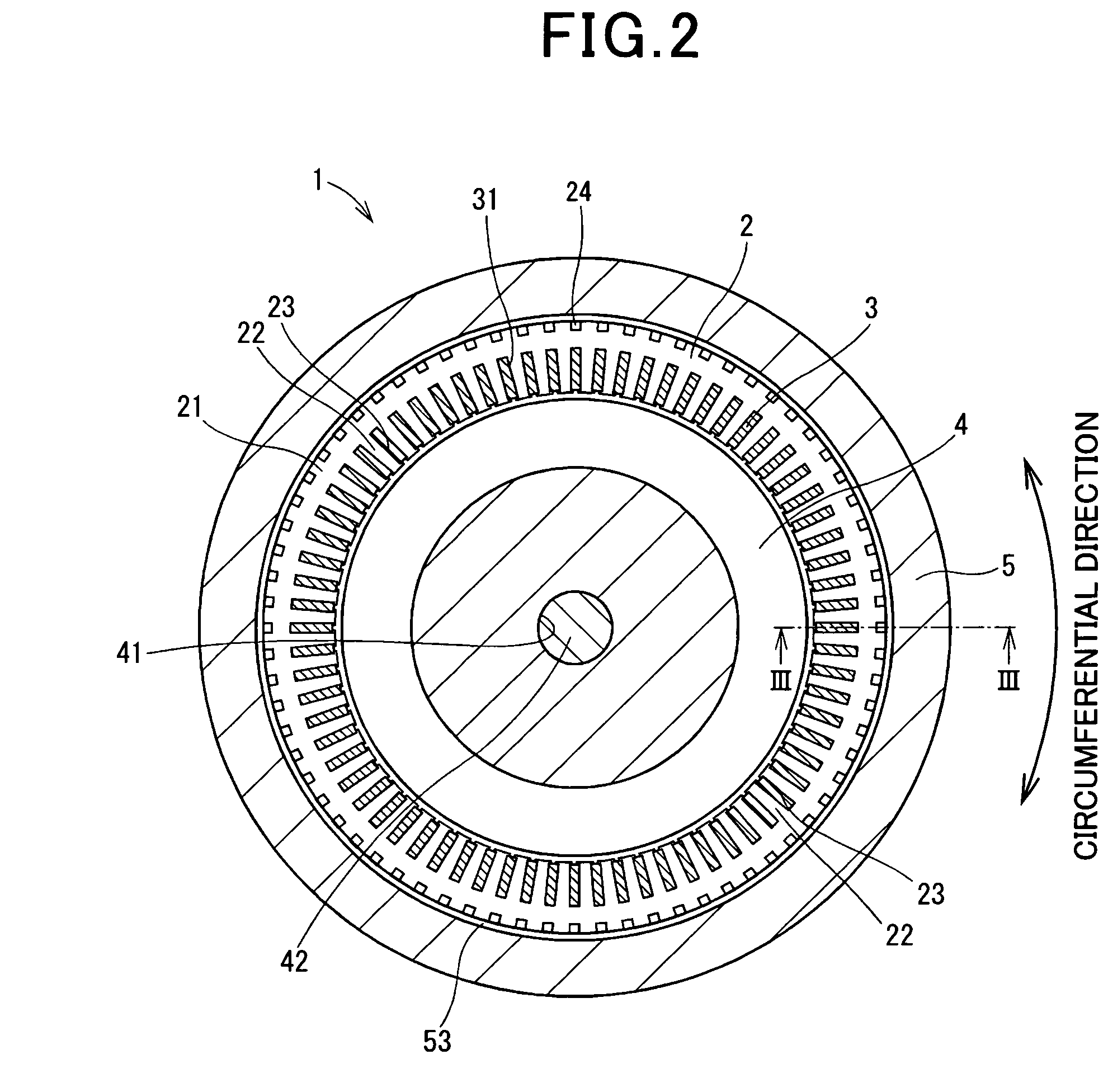Electric rotating machine
a technology of rotating machines and rotating shafts, which is applied in the direction of dynamo-electric machines, electrical apparatus, magnetic circuit shapes/forms/construction, etc., can solve the problems of increasing manufacturing costs, difficult to effectively transmit the heat generated by the stator coil to the stator core, and difficult to spread the cooling oil over the entire axial length of each gap between the insulator and the stator core, so as to achieve effective transmission of heat and reduce heat resistance between the stator core and
- Summary
- Abstract
- Description
- Claims
- Application Information
AI Technical Summary
Benefits of technology
Problems solved by technology
Method used
Image
Examples
first embodiment
[First Embodiment]
[0036]FIG. 1 shows the overall configuration of an electric rotating machine 1 according to the first embodiment of the invention.
[0037]In the present embodiment, the electric rotating machine 1 is configured as a brushless motor for use in, for example, a motor vehicle. As shown in FIG. 1, the electric rotating machine 1 includes a stator, a rotor 4, and a housing 5. The stator includes a stator core 2, a stator coil 3, and an insulator 31.
[0038]Referring to FIGS. 1 and 2, the stator core 2 is formed by laminating a plurality of magnetic steel sheets 21 and has a hollow cylindrical shape. The stator core 2 has a plurality of stator teeth 22 extending in the axial direction and a plurality of slots 23 each of which is formed between one circumferentially-adjacent pair of the stator teeth 22. More specifically, the slots 23 are formed in the radially inner surface of the stator core 2 and spaced by the stator teeth 22 in the circumferential direction of the stator c...
second embodiment
[Second Embodiment]
[0078]FIGS. 10-12 show the configuration of a stator according to the second embodiment of the invention.
[0079]In the present embodiment, as shown in FIGS. 10-12, in those internal walls of the magnetic steel sheets 21 which define the slots 23 of the stator core 2, there are formed grooves 26 that extend in the axial direction of the stator core 2.
[0080]Moreover, in the present embodiment, each of the grooves 26 has a substantially semicircular cross section perpendicular to the axial direction of the stator core 2. The magnetic steel sheets 21 also have rounded edge portions 27 that are respectively formed at axial ends of the internal walls of the magnetic steel sheets 21. Further, the radius r of the cross sections of the grooves 26 is set to be less than the radius R of the rounded edge portions 27 of the magnetic steel sheets 21.
[0081]In addition, the grooves 26 may be formed, for example by grinding, in the respective magnetic steel sheets 21 before laminat...
PUM
| Property | Measurement | Unit |
|---|---|---|
| dimensions | aaaaa | aaaaa |
| width | aaaaa | aaaaa |
| thickness | aaaaa | aaaaa |
Abstract
Description
Claims
Application Information
 Login to View More
Login to View More - R&D
- Intellectual Property
- Life Sciences
- Materials
- Tech Scout
- Unparalleled Data Quality
- Higher Quality Content
- 60% Fewer Hallucinations
Browse by: Latest US Patents, China's latest patents, Technical Efficacy Thesaurus, Application Domain, Technology Topic, Popular Technical Reports.
© 2025 PatSnap. All rights reserved.Legal|Privacy policy|Modern Slavery Act Transparency Statement|Sitemap|About US| Contact US: help@patsnap.com



